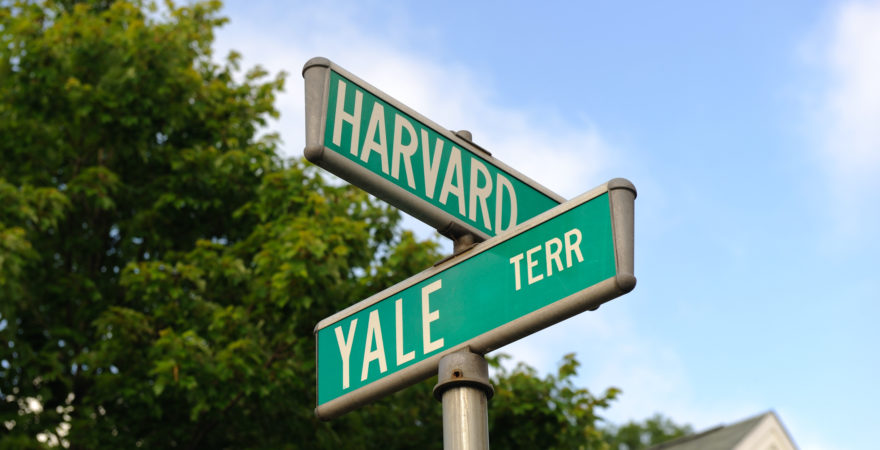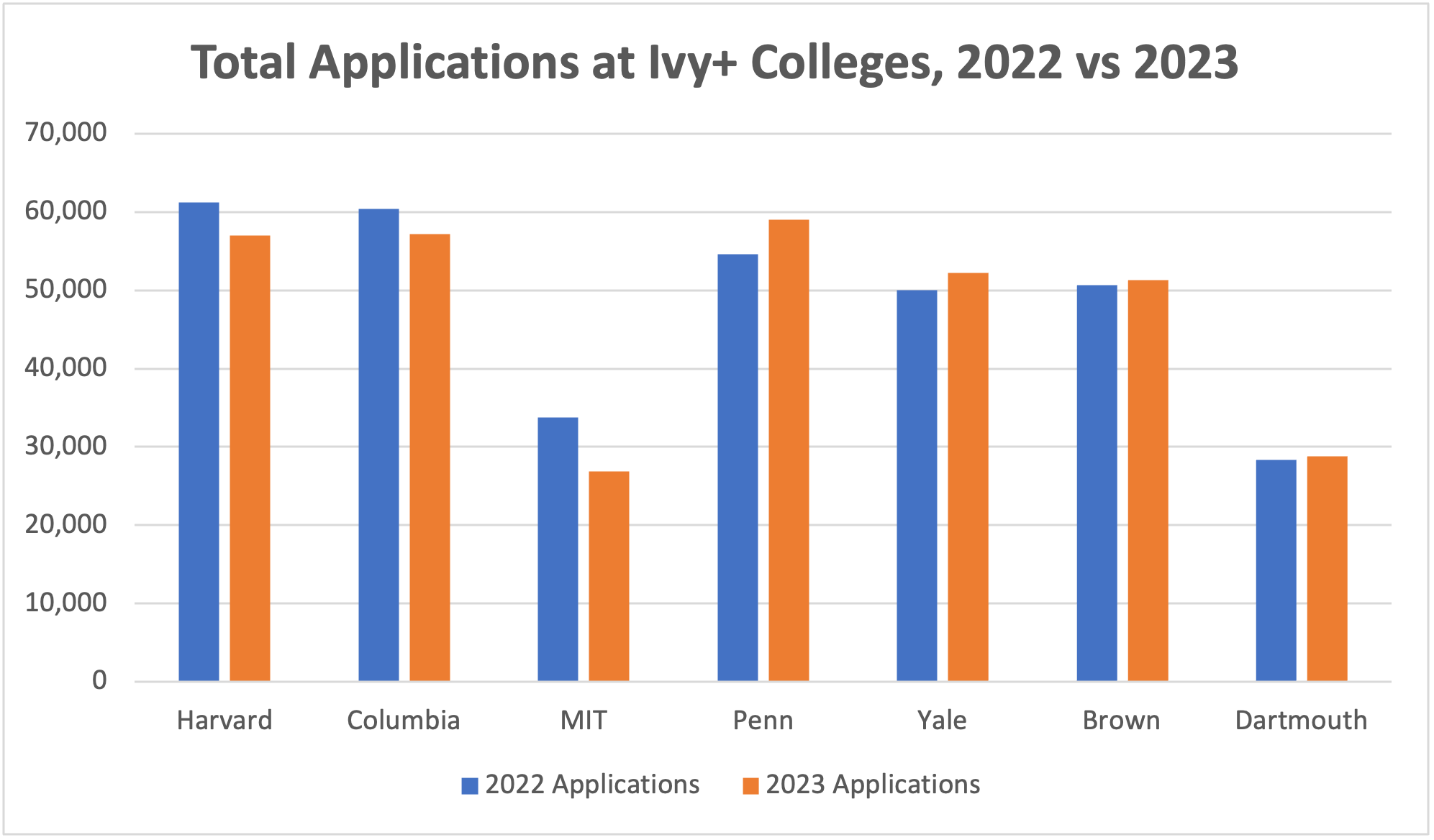- Blog
- > College Admissions
Recent Trends: Ivy League and Other Colleges with Low Acceptance Rates
- Dr. Rachel Rubin
- | June 7, 2023

In recent years, top schools have seen increases in applications of 30, 40, even 50 percent, leading to some of their lowest-ever admission rates. This year, college applications have again mostly increased, with only Columbia University, Harvard University, and MIT seeing a slight decrease in overall applications (of the schools that reported their admissions data).

Of course, more applications doesn’t mean more spots; if anything, many selective colleges had to accept even fewer students this year than they did last year, between keeping their class sizes at standard levels and responding to increasingly sophisticated analytics.
Therefore, these record-high numbers also corresponded to very low admission rates, with some already shockingly low rates dropping even further this year (including Yale University and Dartmouth College). Even with its slight decrease in applications compared to last year, Harvard University’s acceptance rate remains the lowest, sitting at 3.4%.
| School | 2022 Admission Rate | 2023 Admission Rate |
| Harvard University | 3.2% | 3.4% |
| Columbia University | 3.7% | 3.9% |
| MIT | 3.9% | 4.7% |
| University of Pennsylvania | 4.4% | 4.1% |
| Yale University | 4.5% | 4.3% |
| Brown University | 5.0% | 5.1% |
| Dartmouth College | 6.2% | 6.0% |
Read our blog on Harvard acceptance rates to review your chances of getting into the college.
Why Are College Admission Rates Still So Low? Will They Ever Go Back Up?
The biggest culprit of last year’s rise in applications hasn’t left us: the turn to test-optional admissions at top schools. Already, numerous top schools have announced the extension of their test-optional policies, some for only a year, but others (such as Harvard) for multiple years. That alone is likely enough to keep application numbers high, as students who might have skipped applying to Ivy League schools because of their test scores will now apply anyway.
Further, and somewhat paradoxically, these record-low college admission rates are likely to be self-perpetuating. The more uncertainty that exists around who gets into what schools and why, the more applications that students will submit; so, even as the number of individual applicants across all schools falls, application numbers at nationally-recognized schools will still continue to rise. If colleges don’t increase their class sizes, which they do not seem likely to do, this trend will inevitably produce lower acceptance rates.
What Does This Mean for Next Year?
Whenever anyone predicts that admission rates can’t fall any further at top schools, they end up being proven wrong. So, we won’t do that! Rather, we’ll all just have to wait and see if these trends continue or if they begin to reverse themselves. As the uncertainty of the COVID years lessens, applications could plateau or even continue to fall, but it’s likely to take a few years before we start to see admission rates at top schools rise again—if they ever do.
Here at Spark Admissions, we’re dedicated not only to closely tracking this data, but also to helping students use it to their advantage. Despite a challenging year, our acceptance rates at top schools remain significantly higher than the national average. If you want to know whether your profile is competitive for an Ivy League school, schedule an initial consultation with us.


